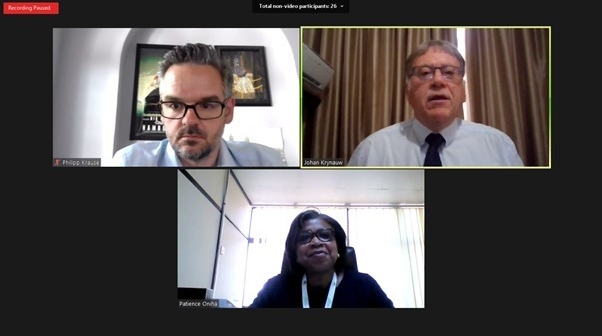
Government debt has been the centre of the macroeconomic and political agenda since the global financial crisis and has increased significantly due to the impact of the COVID-19 pandemic on the fiscus.
The recent pandemic has resulted in economies experiencing sharp distraction, central banks reducing policy rates, governments issuing more debt, due to tax revenues lacking and expenditures increases, because of fiscal stimulus packages.
Debt managers had to adopt quickly higher borrowing requirements, by seeking alternative sources of financing, such as accessing International Monetary Fund and World Bank emergency financing, multilateral development as well as increasing local debt capital markets funding. As investors become more risks averse, their behaviour changed, with a preference towards the short end of the curve. The current short-term nature of public debt portfolios means a substantial amount of debt redemptions will have to be rolled over in the coming years, to avoid refinancing risks. As a funding strategy, some countries, to avoid refinancing risks, have spread their issuances, to smoothen future redemptions. Where refinancing risks are unavoidable, the focus is to manage the refinancing risks actively, through switches or buy-back programmes.
For the near future, borrowing requirements in most African countries will remain high, which will further exacerbate the debt burden. Even middle-income countries are now facing unsustainable debt levels. The average debt to GDP ratio in Africa is expected to reach 71.3%, which will be 11% above the sustainable threshold of 60%. With rising debt levels, the cost of borrowing is now threatening other spending items in the budget, such as health, education, and protection services. The borrowing cost of African countries, however, remains high, when compared to other developing and developed countries. Investing in Africa is perceived as risky, and therefore, a high risks premium is charged on investments. It is believed that better communication, strengthening and building relationships and more transparency as to where funding is sourced from, borrowing cost could be reduced. It is a matter of building trust and for countries to put those reforms in place that will, over time, establish themselves as credible and reliable borrowers.
Interest rates in developed countries will remain low, in some instances even negative, which means that returns on investments are under pressure, which made fund managers seek for higher returns in emerging and developing markets. African countries should, therefore, continue to develop their local debt capital markets, by making them more accessible, reduce costs of trading and avoid any unnecessary regulatory requirements. A local source of funding will reduce the risks and make countries less vulnerable to external shocks.
Access to regional markets and tapping into the euro markets have softened the funding pressures for francophone countries in the West African Monetary Union (WAMU) region. It is encouraging that the African Development Bank has undertaken a project, where seven of the largest stock exchanges on the continent, will soon start working together by developing, amongst others, a central platform for trading and quoting prices. This initiative will attract a broader investor base and increase liquidity, which will eventually lead to cheaper funding for issuers of government securities.
Apart from dealing with huge debt overhang, due to the COVID-19 pandemic and high borrowing requirements, public debt managers in Africa also need to focus on how to normalise matters and how to steady the ship. High borrowing requirements cannot be maintained for much longer. Countries should start thinking on how to stabilise high debt levels and turn around the downward trend of their ratings.
During a recent network meeting of public debt managers in Africa, hosted by CABRI, countries like Zambia were explaining how expansionary fiscal policies, with the focus on infrastructure development, has led to high debt levels even pre-COVID-19. Drastic measures are now taken to restore the impact of high debt levels in Zambia. The government in Zambia has placed a moratorium on all new external debt funding and opted to defer interest payments. Austerity measures were also introduced to bring public spending under control and in line with future tax revenues collections. To undertake these drastic measures, countries must work closely with creditors and investors by following clear communication strategies that will lead to better understanding of the fiscal challenges of countries.
During the network meeting, countries have shared their strategies towards stabilising debt and how to soften the impact of the high debt overhang as a result of the COVID-19 pandemic. Some of the key takeaways were –
- Countries need to be innovative by diversifying funding instruments that will attract a broader investor base;
- Building and strengthening relations with key stakeholders;
- Within regions, negotiate unified terms and costs structures with creditors/investors and
- To restore normality again, by reverting to the suspension of expenditure ceilings.
Public debt managers, however, need to be careful not to find quick solutions for the current high borrowing and high debt distress situation. Politicians in debt distressed countries might opt for quick restructuring that provides abundant short-term relief but could complicate matters for the next administrations. Countries and development partners rather need to think of long-term needs and support to help countries finance economic recovery and to deal with debt sustainability issues that arise post-pandemic.